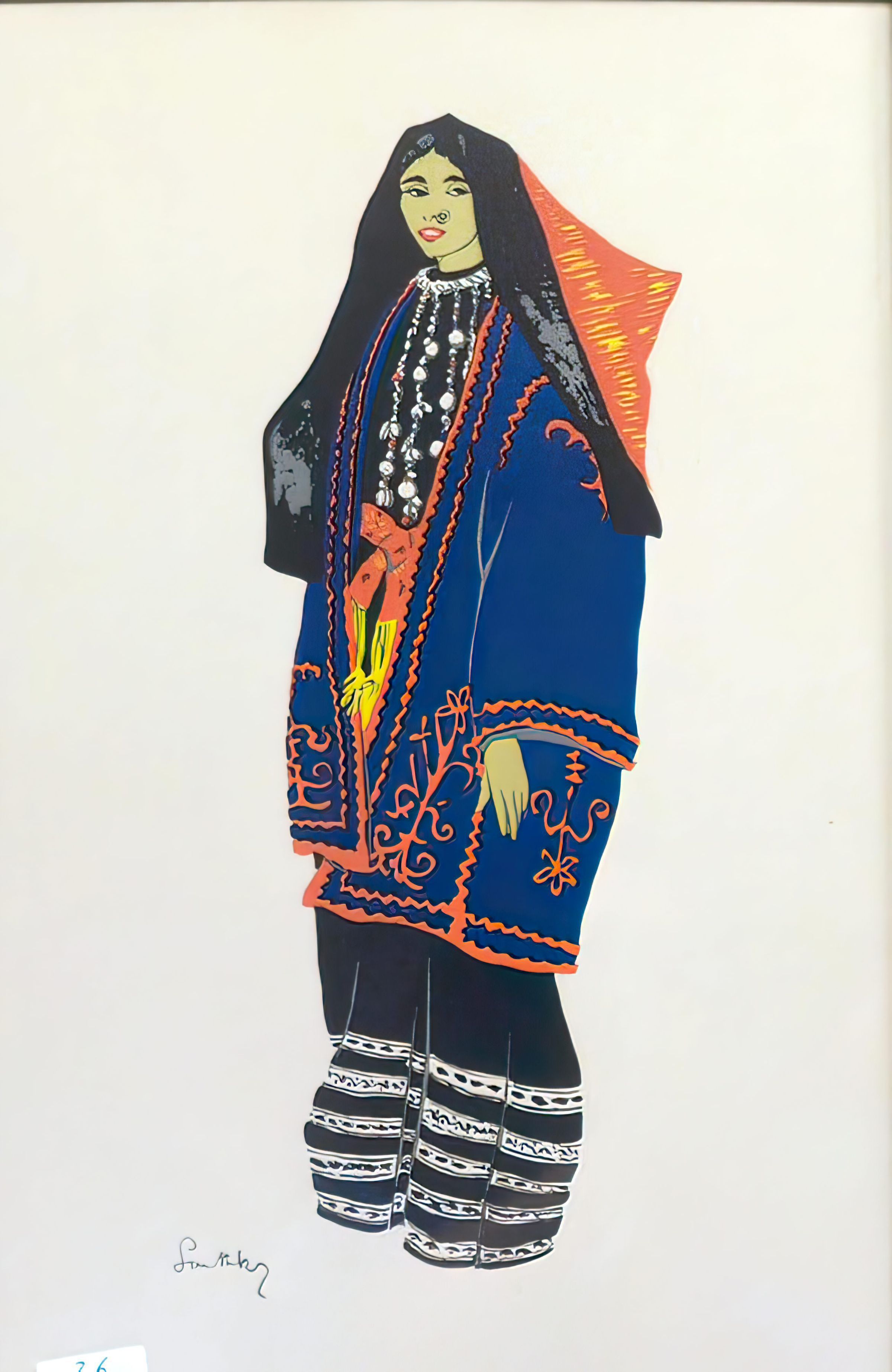Name/Title
"Bedu Woman of Lake Huleh" (1957)Entry/Object ID
2021.012.005Description
Object 2012.012(1-6) is a six-part series of illustrations produced by Susan Southby, titled "Costumes of the Holy Land" and signed in pencil. The illustrations use pochoir (French: “stencil”), and is distinguished from ordinary stenciling by a highly refined technique of making fine limited editions of stencil prints. The six costumes reproduced by Southby were included among a collection of thirty or more traditional dresses worn by Palestinian girls at a pageant in Beirut, organized by the Women's Auxiliary of the United Nations Relief Works Agency for Palestine Refugees intended to raise funds for charity. Southby produced the illustrations in the 1940s, published and distributed the drawings in 1953 by Dar Al-Maaret of Beirut, and the accompanying publication, also titled "Costumes of the Holy Land" was published in 1953 (1st edition) and 1957 (2nd edition).
Southby illustrated 3,080 copies by hand, the first 250 bear the numbers "One" to "Two Hundred and Fifty", written in words, and the drawings are signed in pencil by the artist and mounted, ready for framing. The succeeding 2,750 bear the numbers 251-3,000 written in Arabic numerals, the artists signature printed and are unmounted. The remaining 80 bear the numbers MMMI to MMMLXXX written in Roman figures, and were not for sale -- they bear the artists signature (printed) and are also unmounted. The second edition of the book does not indicate how many prints were produced, however it is likely that this set belongs to the second edition as they continue authentic stenciling technique on paper, and are not a reproduction, however are numbered in English numerals (i.e. "2 Arab Woman of Ramallah Near Jerusalem").
The illustration is numbered 5, and titled "Bedu Woman of Lake Huleh". Lake Huleh (Arabic: سهل الحولة) was located in the Hula Valley (Arabic: سهل الحولة) that is situated north of Safad (Northern Galilee), close to the southern Syrian border. The villages surrounding Lake Huleh include Tulayl, al-Ulmaniyya, al-Dirbashiyya, Mallaha. Prior to it's drainage by the Jewish National Fund from 1951-1958, the lake was 5.3 km (3.3 mi) long and 4.4 km (2.7 mi) wide, extending over 12-14 square kilometers. Most villages in the neighborhood of Lake Huleh were depopulated in 1948 as a result of either bombardment by mortars or a psychological warfare campaign to instill fear of an imminent attack.
The traditional dress of Lake Huleh is not well documented, but appears to incorporate Bedouin styles reminiscent of tribes who flocked their pastures around Lake Tiberius (Sea of Galilee), featuring 4-5 horizontal bands of embroidery in the skirt on a dark indigo cotton fabric with a large embroidered overcoat. The term "Bedouin" (or "Bedu", plural) denotes the communities that lived nomadic or semi-nomadic lifestyles in the region. The styles of the Bedu must be understood and analyzed as separately from Palestinian villagers (Arabic: "fellahin").Collection
Permanent CollectionGeneral Notes
Note
Courtesy Nidal and Melissa Jarrard-Mahayni Collection
